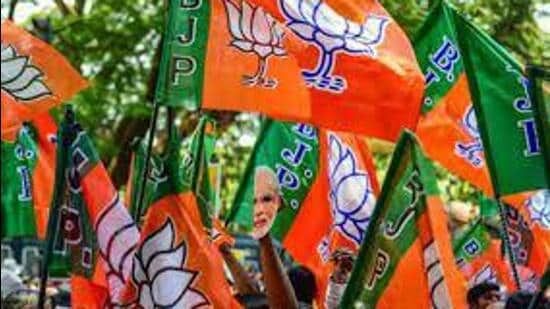
On October 5, the day Haryana was voting, Prime Minister Narendra Modi was in Maharashtra – for the second time in a fortnight.
Earlier, on October 2, a day after Jammu and Kashmir had finished voting, Modi headed for Jharkhand, and not Haryana – his second visit in 17 days.
Modi probably knew what awaits his Bharatiya Janata Party (BJP) in Haryana and Jammu and Kashmir. It was time for him to focus on the next set of two states slated to go to polls sometime next month. Given that the BJP was never a major political player in J&K, especially in the Valley, it has reasons to be content with whatever it achieved in the state.
The party was far from comfortable in Haryana. Replacing Chief Minister Manohar Lal Khattar merely seven months ahead of elections was a gambit it was forced to take, to divert votersʼ attention and deflate the anti-incumbency it barely managed to duck in 2019 on losing its majority but hanging on to power.
Compared to Haryana and J&K, Maharashtra is a key state politically, and the Jharkhand outcome may have a direct bearing on neighbouring Bihar, given that Jharkhand was carved out of Bihar as a separate state at the turn of this century.
The BJP had managed to come to power in Maharashtra through the backdoor, by orchestrating splits in the two parties that had ditched it in 2019 – the Shiv Sena walking out of the alliance over the issue of the chief ministerʼs position and the NCP, within days of joining hands with it. All its endeavours to break the ruling alliance in Jharkhand either failed, or the party wisely stopped short of it on many occasions.
The BJPʼs star campaigner, Modi, beginning to focus on Maharashtra and Jharkhand without taking a well-deserved break could be termed admirable, as he remains unwavering in his pursuit of making India Congress-free, despite hiccups in states like Himachal Pradesh, Karnataka and Telangana. By now, he knows that making India Congress-free is like the concept of Ramrajya – the nearer you reach, the farther it gets out of reach. Yet, he has been on duty to give the BJP its best chance to win both these states.
Modiʼs closest and most trusted aide, Home Minister Amit Shah, has done the same. He has visited Maharashtra and Jharkhand twice each, in the latter half of September, to iron out any wrinkles, especially in Maharashtra, before Modiʼs visits.
Whilst the BJPʼs top two leaders getting proactive in poll-bound states even before elections are formally announced could be interpreted as their commitment to the cause, it could also be seen as their compulsion. As the duo from Gujarat began to strengthen their grip over the party and the government at the Centre, knowingly or unknowingly, they have virtually eliminated the second line of leadership in the BJP.
During its formative years, when the BJP had formidable leaders like Atal Bihari Vajpayee and Lal Krishna Advani at the top, the party had created a battery of second-line leadership, including some second-generation leaders capable of taking over from them. These included even Modi, who, without any legislative and administrative experience, was appointed Gujarat Chief Minister in 2001, to revive the partyʼs sinking fortunes. Modi created history as Gujarat became the first state to completely turn its back on the Congress, where the latter has remained out of power for nearly three decades now.
The second line of leadership the BJP had created comprised capable leaders. Some were exceptional in running the party and expanding its base, others were adept at organising funds, cultivating friendly media in the hands of a group, while keeping the war room ready for an election was the job of those skilled at strategy.
To top it all, the BJP had created a team of powerful speakers – Murli Manohar Joshi, Vijayaraje Scindia, Sushma Swaraj, Arun Jaitley, Pramod Mahajan, Shatrughan Sinha and Navjot Singh Sidhu, to name a few. Unlike the present scenario, where Modi and Shah must do it all themselves, these leaders used to create the pitch for Vajpayee and Advani to deliver the final blows. With a battery of forceful speakers being unleashed in a poll-bound state, the BJP adopted the military terminology ‘carpet bombing, as one leader after another would visit constituencies in the run-up to elections.
This appears to have become a forgotten chapter of the BJPʼs growth strategy. There used to be some extremely popular regional leaders capable of taking care of their respective states. However, now, teamwork is no longer an ally; over the years, every decision has been centralised. The BJP still has some good orators capable of leaving voters mesmerised, but these speakers are not given the opportunity, or simply speaking, the party lacks faith in them. Possibly, they are not in the good books of Modi and Shah. It is difficult to imagine that Modi can feel threatened with anyoneʼs growing stature in the party, as he is still miles ahead of others, and Shah cannot be his replacement whenever the time comes, without facing a challenge.
Whatever the reason, the Modi-Shah duo doing all the hard work to keep the BJP in good health is at best a short-term measure, which has now started ailing the party. The Congress party has paid a heavy price for promoting and projecting members of a family as its only saviours and star campaigners. The BJP seems to be heading in a similar direction and may end up regretting it in the long run unless curative steps are initiated and taken now.
Not to forget that Modi will turn 75 next September. No one knows if he will step down, respecting a rule he had created to keep the old guard away from the government, or will continue in office to break Jawaharlal Nehruʼs record as the longest-serving Prime Minister of India.
Ajay Jha is a senior journalist, author and political commentator